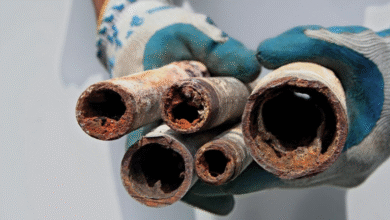Building Resilience: The Comprehensive Guide to Earthquake-Ready Homes

Introduction to Earthquake Preparedness
Earthquakes pose a significant threat to communities worldwide. Given their increasing frequency and intensity, homeowners must implement strategies prioritizing safety and security. Retrofitting serves as a beacon of hope in disaster preparedness, offering a pathway to fortifying homes against seismic activities.
Earthquakes are unpredictable and can occur with little to no warning. Their destructive potential is immense, capable of reducing entire buildings to rubble within moments. As understanding seismic patterns and behaviors advances, communities need to embrace earthquake preparedness. Retrofitting homes is not just about protection; it is about ensuring the longevity of communities and preserving the personal histories that buildings hold. People who invest in these preventive measures often feel more secure and resilient in the face of potential threats.
Understanding Earthquake Retrofitting
Earthquake retrofitting involves modifying existing structures to enhance their ability to withstand seismic forces. The process is multifaceted, addressing specific vulnerabilities related to an individual building’s age, design, and construction quality. Retrofitting connects new supports to weak points, thus providing structural reinforcement. Some methods include adding shear walls to increase strength horizontally, or underpinning foundations to prevent tilting. Each technique is strategically chosen to enhance the building’s overall strength and flexibility, helping it better absorb and dissipate seismic energy.
Key Features of Retrofitted Homes
The effectiveness of a retrofitted home lies in its strengthened framework, which can withstand significant seismic forces. Retrofitted homes often feature reinforced walls that can prevent lateral movements that cause failed structures during earthquakes. Foundation bolting is also critical in preventing a home from sliding off its foundation, a common occurrence during strong seismic events. Additionally, homes equipped with braced frames are well-prepared to handle the vibrational forces that can lead to significant property damage in non-retrofitted buildings. These homes protect their occupants and serve as a testament to the efficacy of modern engineering techniques.
Materials and Techniques for Retrofitting
The materials used in retrofitting are carefully selected for their strength and flexibility. Steel is frequently used due to its durability and ability to flex slightly without failing. Similarly, advanced composites provide necessary reinforcements without adding excessive weight to the structure. Techniques like base isolation, which involves placing a building on bearings that move independently from the ground, are pioneering in minimizing damage.
Expert Advice on Assessing Home Vulnerabilities
Identifying vulnerabilities within a home is the first step towards effective retrofitting. Professionals in structural engineering are well-versed in evaluating the risks and assessing necessary upgrades. They often examine the foundation, as instability here can have significant repercussions during an earthquake. Walls, roof connections, and load paths are also carefully inspected. Beyond professional evaluations, homeowners can benefit greatly from educational resources provided by organizations such as the USGS, which offer detailed analyses of seismic risks and assessment guidelines. This invaluable information assists homeowners in making informed decisions about strengthening their properties.
Future Innovations in Earthquake Protection
The future of earthquake protection is bright, driven by technological advancements and innovative materials. Researchers continue to explore new solutions, such as innovative materials that can adapt to stress changes and self-healing concrete that can repair itself after minor cracks occur. Integrating IoT devices into home systems provides real-time data about structural changes during seismic activities, offering immediate insights and preventive alerts. These innovations aim to improve structural resilience and enhance the overall understanding of seismic activities, making communities safer and more prepared for the uncertainties of nature.
Conclusion: Building a Safer Future
Preparing for earthquakes by retrofitting homes represents one of the most proactive measures individuals can undertake. These efforts protect families and properties from unforeseen disasters and contribute to the broader goal of ensuring community resilience. As research progresses and technological advancements surface, the potential to safeguard homes will grow exponentially. Today, retrofitting is a crucial element in the architecture of tomorrow, one that builds a legacy of safety, innovation, and wisdom for future generations.




